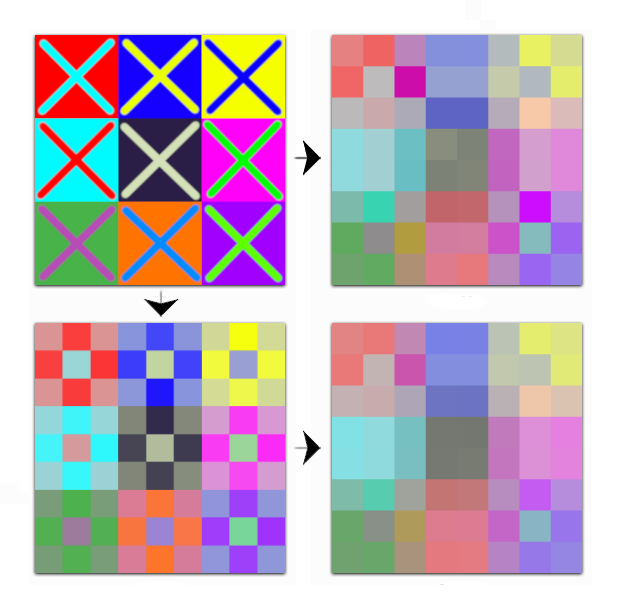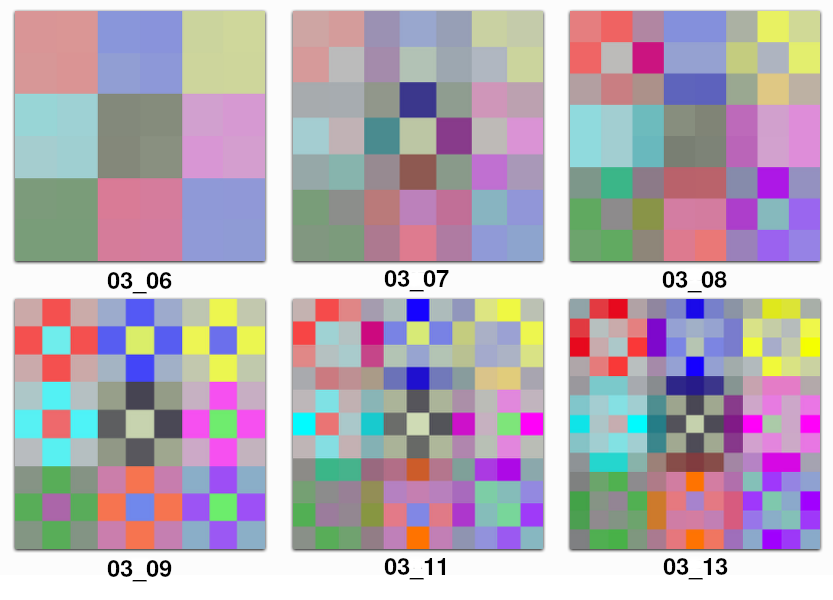You are here
Diary of the Grid: Notes on the Painting Method
A grid of acrylics is painted using non-arbitrary colors. Subsequently, a complementary X is painted inside the square using oil paint. The finished painting is then digitally photographed. Using computer graphics tools, the photograph is manipulated to 'generate' a new set of color transformations across a different grid space.
Below, are illustrations of this method — 'base' RGB colors are used to provide a vivid representation of the method, and some of the computer graphics tools used to create a new photo are described. The new photo is then painted using similar or identical means, using the same painting rules: Acrylic squares are painted followed by complementary Xs in oils to create a second iteration of the first painting.
Figure 1: Painted Xs, and two color transformations from 3x3 to 8x8.
Figure 2: Other color transformations.
The transformation I am currently working is from 3 x 3 to 8 x 8, as demonstrated by three grids in the images above. See the grid labeled "03_08."
The objective of this method, and its effect, is the construction of a grid space that includes the original colors from the image, their complements, and a harmonic spectrum of related colors. Perhaps two complementary colors become six, or nine, unique colors, depending on the transformation.
What the images above demonstrate is how certain transformations are redundant, have several redundant colors, as shown in 03_09, 03_11, and 03_13 (the bottom row in Figure 2). One can see how the transformation from 3x3 array to 9x9 is especially simple and redundant. This is because 9 is a perfect square of 3.
The outcomes of these transformations are relatively independent of the default pixelation in computer graphics programs, such as OpenCV tools. These 'kerneling operations,' as they are called, 'use square 3x3 matrix multiplications on the RGB color space.' The resulting harmonies are of interest.
For example, in music, the 9:8 ratio is the whole tone.

Figure 3: Whole tones on the piano.
The 9:8 transformation is shown in Figure 1: proceeding from the grid in the upper left corner, to the grid in the lower left corner, to the one in the lower right corner completes the transformation. As one can see, this final grid is nearly identical to the grid above it, which is generated using a single 3:8 transformation.


